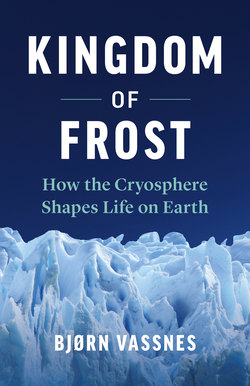Читать книгу Kingdom of Frost - Bjørn Vassnes - Страница 5
На сайте Литреса книга снята с продажи.
ОглавлениеPrologue
THE DANCE OF THE WHITE CAPS
WE HAVE ALL seen the famous photo taken from Apollo 17 in 1972. This picture of our planet, alone out there in endless space, taught us to think of Earth as our home, our only home, as something precarious and fragile that we needed to take care of. For the environmental movement, the photograph became almost iconic. The picture also gave us our perception of Earth as the “blue planet,” because so much of the surface is covered in blue oceans.
But there is something this picture does not tell us, something we could have seen if the image of the Earth had been filmed from out there rather than just photographed. Not for just a few minutes, either, but continuously, throughout the entire year and—if it were possible—over millions of years. If that film were then played back at high speed, we would see a different image: we would see a planet in constant flux, the white caps at either pole expanding—over land and sea—and then shrinking again, in time with the seasons. When it was winter in the north, most of the landmasses would be covered in snow, which would vanish again when summer came. And likewise the sea, in both south and north: great, white, snow-covered expanses of ice spreading and shrinking, spreading and shrinking—back and forth in an annual dance.
If the film ran a little longer, we would also see other movements, following a more extended rhythm: in certain periods, less white would be visible, in others, a little more. And if the film were really long, we would see something astonishing. On occasions, the white cap would spread out across the entire planet, turning everything white. Earth becomes like a snowball. Not a single dark or blue patch in sight.
But the opposite also happens: for periods at a time, all the white vanishes—but always returns again. Sometimes slowly, other times quickly. Now and then, it seems to happen rhythmically, in steady cycles. But then the rhythm is interrupted. The white cap goes awry, or suddenly disappears. At the end of the film, as it approaches our own era, we see the rhythm becoming quicker, more intense. And as the film stops, we see that the white is shrinking once again, faster than ever before. It is so striking that we wonder what will happen when the film continues.
To understand what is happening down there, to grasp the rhythm of this dance, we must leave Apollo 17 and zoom in to the surface of this unique planet, so different from its duller siblings, Venus and Mars. They may be beautiful enough in the night sky, but they are monotonous and dead by comparison with our spectacular, ever-changing Earth. What causes this dance, and how does it manifest itself to earthlings? Could it be that they don’t even notice it?
